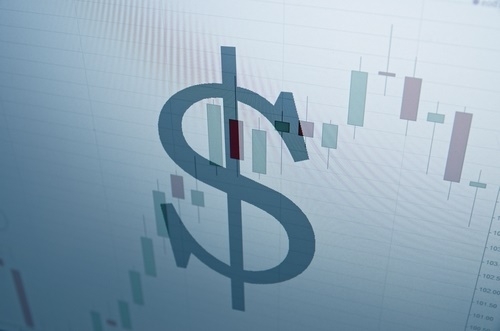
By Roger J Kerr

Two of the negative forces that have worked to push the NZ dollar lower over recent weeks (TWI down 5% from 80 to 76) have run their course in my view and will no longer be causing Kiwi dollar weakness going forward:-
- Dairy prices stabilised at the GDT auction last week following the sharp sell-off in wholemilk powder prices from US$3,500/MT to US$2,600/MT since the start of the year. End product manufacturers/ buyers of milk powder have returned to the market at the lower market prices and the futures have reversed up to US$2,850. The global diary demand/supply equation has come back into more of a balance, so expect stability in prices over coming months and thus little impact on the currency.
- The unwinding of speculative NZD/AUD cross-rate positions (selling of the Kiwi dollar against the Aussie dollar) that smashed the rate down from 0.9650 to 0.9100 over recent weeks also appears to have petered out. Those punters who wanted out and switched funds back to Aussie have now done so. The NZD/AUD cross-rate bounced up from 0.9100 to 0.9220 last week as our commodity (dairy) stabilised, however the Aussie metal and mining commodities look far more vulnerable to price weakness going forward.
Whilst the above variables are now mildly positive for the Kiwi dollar, developments in the US make the NZD/USD exchange rate jig-saw rather more complex.
The epic political failure of the Trump administration on Friday to get their first major policy initiative, repealing of Obamacare, through Congress puts the credibility of the Trump reflation rally on borrowed time.
The US dollar has already weakened from $1.0500 to $1.0800 as the positive Trump policies for higher growth and inflation (tax cuts and infrastructure investment) could also fail due to the mismanagement of the politics within Trump’s own Republican Party.
A major correction down in US shares now has to be on the cards as investors start to doubt that Trump can deliver on his pledges.
Falling equity markets and “risk off” investor sentiment is negative for the NZD against the USD.
However, a US dollar not strengthening as was expected is a positive for the Kiwi. Again, the forces on the NZ dollar from this US source appear to contra each other off.
The Kiwi dollar remains a “commodity” currency and the future direction of both hard and soft commodities from current levels will have an influence on the exchange rate direction and value. Yet again, my assessment of the positive and negatives in this area seems evenly balanced going forward:-
- The AUD/USD rate follows Aussie metal and mining commodity prices and most of the time the NZD/USD rate tracks the AUD/USD exchange rate. The potential postponement of the anticipated infrastructure spend/investment in the US is negative for Aussie commodity prices like iron ore that have rallied higher since Trump came in to power last November. Iron ore futures prices in China and Singapore tumbled late last week and further weakness has to be expected. Once again it appears that the Chinese importers of iron ore have overdone their buying and stockpiles in China have built up again. The AUD/USD exchange rate failed to hold above its major barrier at 0.7700 last week and has rapidly reversed engines to 0.7600. The Aussie dollar remains vulnerable to further iron ore commodity price weakness.
- On the other side of the coin, New Zealand’s soft agriculture/primary commodities are all experiencing positive price pressures at this time. Log prices are very strong and the lower NZD cross rates to the Pound and Euro are pushing up lamb prices. Hawkes Bay farmers relishing in abundant autumn rain and strong grass growth are holding onto their lambs (and wool) as the prices lift. Firm kiwifruit, apple and aluminium prices complete the positive picture with recovering dairy prices. Our NZD denominated commodity price index will be moving higher, a positive for the Kiwi dollar.
The net-net result of all the above countervailing forces is a continuation of a relatively stable NZD/USD rate in the 0.7000/0.7100 trading range. The relative commodity price movements from here suggest a rising NZD/AUS cross-rate.
Email:
Daily exchange rates
Select chart tabs
Roger J Kerr contracts to PwC in the treasury advisory area. He specialises in fixed interest securities and is a commentator on economics and markets. More commentary and useful information on fixed interest investing can be found at rogeradvice.com

We welcome your comments below. If you are not already registered, please register to comment.
Remember we welcome robust, respectful and insightful debate. We don't welcome abusive or defamatory comments and will de-register those repeatedly making such comments. Our current comment policy is here.